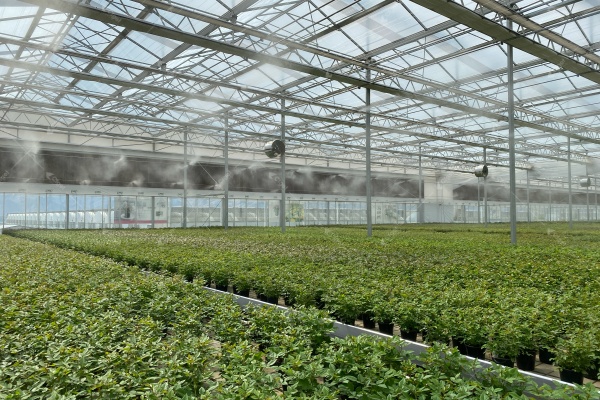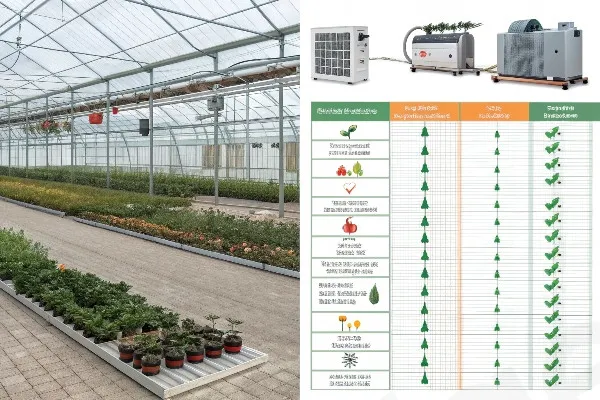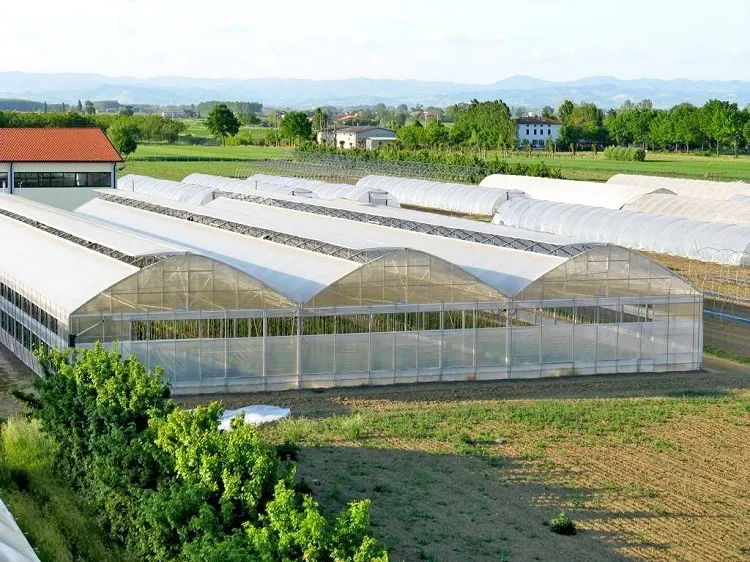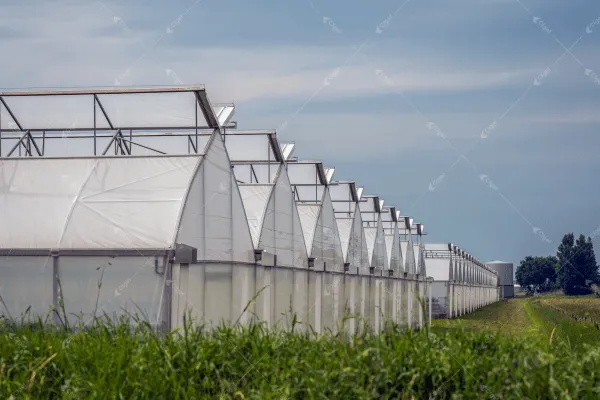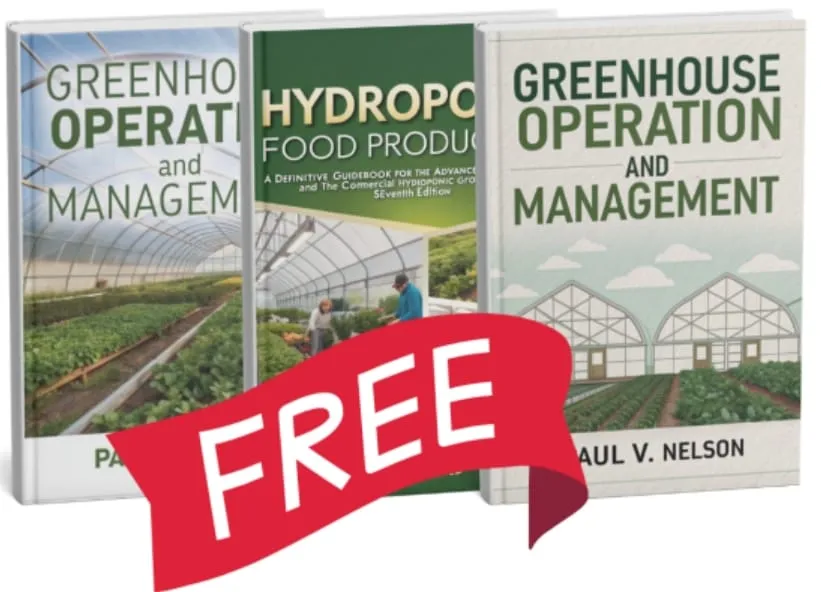Modern agriculture faces a critical challenge. Growers need higher yields and better quality crops while managing limited resources and unpredictable weather conditions.
Light deprivation and indoor farming represent two revolutionary approaches to controlled agriculture. Light dep systems leverage natural sunlight with precise control mechanisms, while indoor farms create completely artificial growing environments. Both methods significantly outperform traditional farming in quality consistency and resource efficiency.
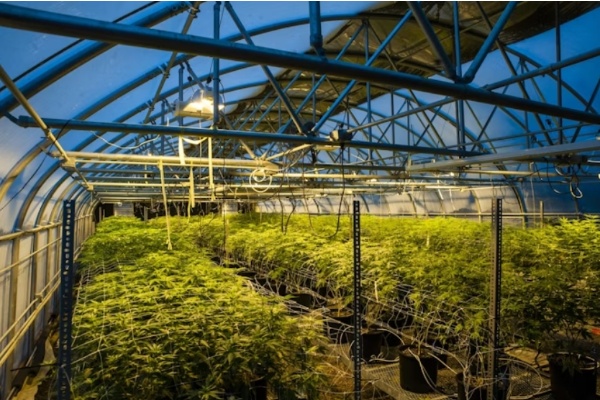
Advanced controlled environment agriculture systems maximize crop potential.
After 29 years in greenhouse technology development, I have witnessed the evolution from simple plastic tunnels to sophisticated controlled environment systems. The choice between light deprivation and indoor farming depends on your specific crops, market demands, and operational goals.
How Light Dep Leverages Natural Light Advantages for Flavor and Maturity?
Traditional farming cannot match the precision that modern growers demand. Weather variations destroy crop consistency and limit harvest timing control.
Light deprivation systems combine natural sunlight benefits with photoperiod control. These systems use automated curtains or covers to manipulate day length, triggering flowering in light-sensitive crops while maintaining the full spectrum advantages of natural light for superior flavor development and plant maturity.
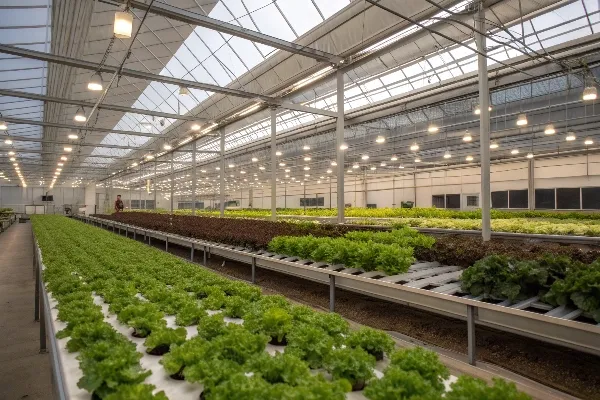
Automated curtains provide precise photoperiod control using natural light.
Light deprivation technology excels in crops that require specific photoperiod triggers for flowering or fruiting. We have installed these systems across Southeast Asia, Europe, and Central Asia, where growers cultivate medicinal cannabis, specialty tomatoes, and exotic fruits. The natural light spectrum contains wavelengths that artificial lights struggle to replicate completely. This full spectrum exposure results in higher concentrations of essential oils, better color development, and enhanced nutritional profiles.
The system works through automated blackout curtains that deploy according to programmed schedules. During vegetative growth, plants receive extended daylight hours. When flowering initiation is desired, the curtains reduce light exposure to 12 hours or less, depending on the crop requirements. This precise control allows multiple harvests per year while maintaining the quality advantages of natural light exposure.
Temperature management becomes easier with light deprivation systems because natural light provides consistent heating during the day. The thermal mass effect of soil and structural elements stores this energy, reducing heating costs during cooler periods. Our clients in Central Asia particularly benefit from this natural heating effect, as their extreme climate conditions make energy efficiency crucial for profitability.
How Indoor Farming Achieves Consistent High-Quality Output Through Precision Control?
Outdoor growing creates unpredictable results that modern markets cannot accept. Weather variations, pest pressures, and seasonal limitations restrict production capabilities.
Indoor farming eliminates environmental variables through complete climate control and artificial lighting systems. LED technology provides precise light spectrums optimized for each growth stage, while controlled atmosphere systems maintain ideal temperature, humidity, and CO2 levels for maximum photosynthesis efficiency and consistent crop quality.
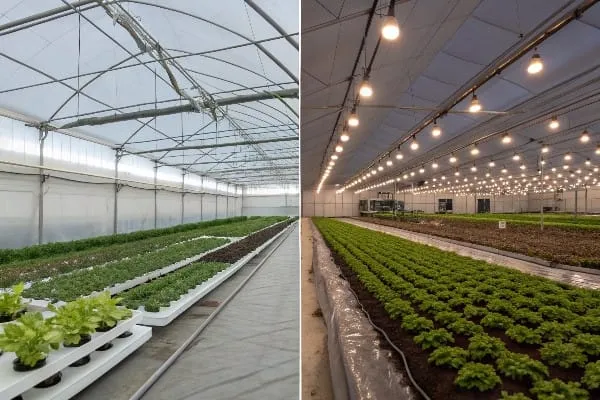
LED arrays deliver precise light spectrums for optimal plant development.
Indoor farming represents the ultimate in agricultural precision. Every environmental factor becomes controllable, from light intensity and spectrum to nutrient delivery timing. Our indoor systems integrate advanced sensors that monitor plant responses in real-time, adjusting conditions automatically to maintain optimal growing parameters.
The lighting technology in indoor farms uses specific wavelengths that target plant photoreceptors directly. Blue light promotes vegetative growth and compact plant structure, while red light triggers flowering and fruiting responses. Far-red wavelengths influence stem elongation and leaf expansion. By controlling these wavelengths precisely, growers can manipulate plant morphology and development timing without relying on natural photoperiods.
Climate control systems in indoor farms maintain temperature within one-degree accuracy, humidity levels within five percent ranges, and CO2 concentrations that maximize photosynthesis rates. This precision eliminates stress factors that reduce crop quality in traditional farming. Plants grown under these controlled conditions show consistent size, color, and nutritional content across all harvests.
Pest and disease management becomes significantly easier in indoor environments. The enclosed system prevents most external contamination, while air filtration systems remove airborne pathogens. This clean environment reduces or eliminates pesticide requirements, producing cleaner crops that meet the highest food safety standards demanded by our European and American clients.
Growth Cycle Comparison: Which Technology Brings Products to Market Faster?
Market timing determines profitability in modern agriculture. Delayed harvests mean missed opportunities and reduced revenue potential.
Light deprivation systems typically complete growth cycles 20-30% faster than outdoor cultivation by extending growing seasons and controlling flowering timing. Indoor farming achieves even greater speed advantages, reducing cycle times by 40-50% through optimized environmental conditions and elimination of seasonal constraints.

Controlled environments dramatically accelerate crop development and harvest frequency.
Growth cycle acceleration depends on eliminating limiting factors that slow plant development. In outdoor farming, temperature fluctuations, inadequate light during shorter days, and seasonal weather patterns extend growing periods unnecessarily. Light deprivation systems address photoperiod limitations while maintaining natural light benefits, but still face some seasonal temperature variations.
Indoor farming removes all seasonal constraints completely. Plants grow under optimal conditions year-round, with consistent 14-16 hour photoperiods and ideal temperatures that maintain maximum metabolic rates. Our indoor systems in Southeast Asia operate continuously despite monsoon seasons that would halt outdoor production for months.
The acceleration comes from multiple factors working together. Optimal light levels maintain maximum photosynthesis rates throughout the growing period. Consistent temperatures keep plant metabolism at peak efficiency. Precise nutrient delivery ensures plants never experience deficiencies that slow growth. CO2 supplementation can increase photosynthesis rates by 20-40% above atmospheric levels.
For leafy greens and herbs, indoor systems can complete growth cycles in 21-28 days compared to 45-60 days outdoors. Fruiting crops like tomatoes and peppers show similar acceleration, with harvest intervals reduced from seasonal to monthly or bi-monthly schedules. This increased production frequency multiplies annual yields significantly, often justifying the higher initial investment costs within two to three growing seasons.
Resource Use Efficiency: Comparing Water, Land, and Nutrient Consumption?
Traditional farming wastes enormous amounts of water, land, and nutrients through inefficient delivery systems. Modern agriculture demands better resource utilization for economic and environmental sustainability.
Light deprivation systems reduce water usage by 40-60% compared to field cultivation through precise irrigation and reduced evaporation. Indoor farming achieves 90-95% water savings through recirculating hydroponic systems. Both methods dramatically improve land use efficiency, with indoor farms producing 10-20 times more per square foot than traditional farming.
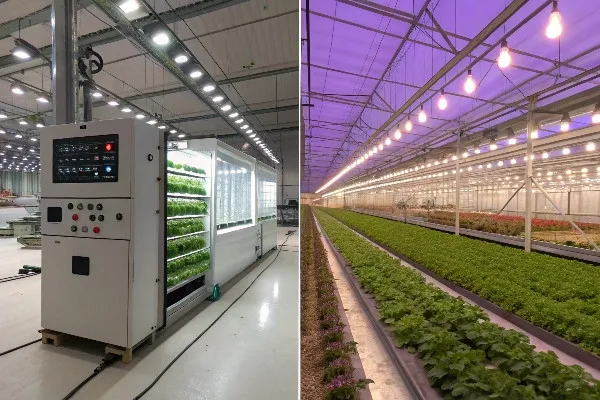
Advanced growing systems maximize output while minimizing resource consumption.
Water efficiency improvements come from precise delivery systems and reduced waste. Light deprivation greenhouses use drip irrigation or hydroponic systems that deliver water directly to root zones, eliminating runoff and evaporation losses common in field irrigation. Covered growing environments reduce water loss through evaporation significantly, especially in hot climates like those our Southeast Asian clients experience.
Indoor farming achieves the highest water efficiency through closed-loop hydroponic systems. Water circulates continuously through the growing medium, with plants absorbing only what they need. Excess nutrient solution returns to reservoirs for reuse, creating virtually zero waste. Advanced systems monitor nutrient concentrations continuously, adding only specific elements that plants consume, maintaining perfect nutrient balance while minimizing waste.
Land use efficiency becomes crucial as agricultural land becomes scarcer and more expensive. Light deprivation greenhouses typically produce 3-5 times more per square foot than outdoor farming through controlled environments that support higher plant densities and multiple annual harvests. The protected environment allows closer plant spacing without increased disease pressure.
Indoor vertical farming maximizes land efficiency through multi-level growing systems. Our vertical farms stack growing levels 8-12 feet high, creating 4-6 times the growing surface area within the same building footprint. Combined with faster growth cycles and higher yields per plant, indoor systems can produce 15-20 times more food per square foot of land area than traditional farming methods.
Nutrient efficiency improvements result from precise delivery and monitoring systems. Traditional farming applies fertilizers broadly, with much of the nutrients lost to leaching, runoff, or soil binding. Hydroponic systems in both light deprivation and indoor farming deliver nutrients directly to plant roots in optimal concentrations, reducing fertilizer requirements by 50-70% while achieving better plant nutrition and higher yields.
Conclusion
Light deprivation and indoor farming both offer significant advantages over traditional agriculture, with indoor systems providing maximum control and efficiency while light deprivation systems balance natural benefits with enhanced control capabilities.

